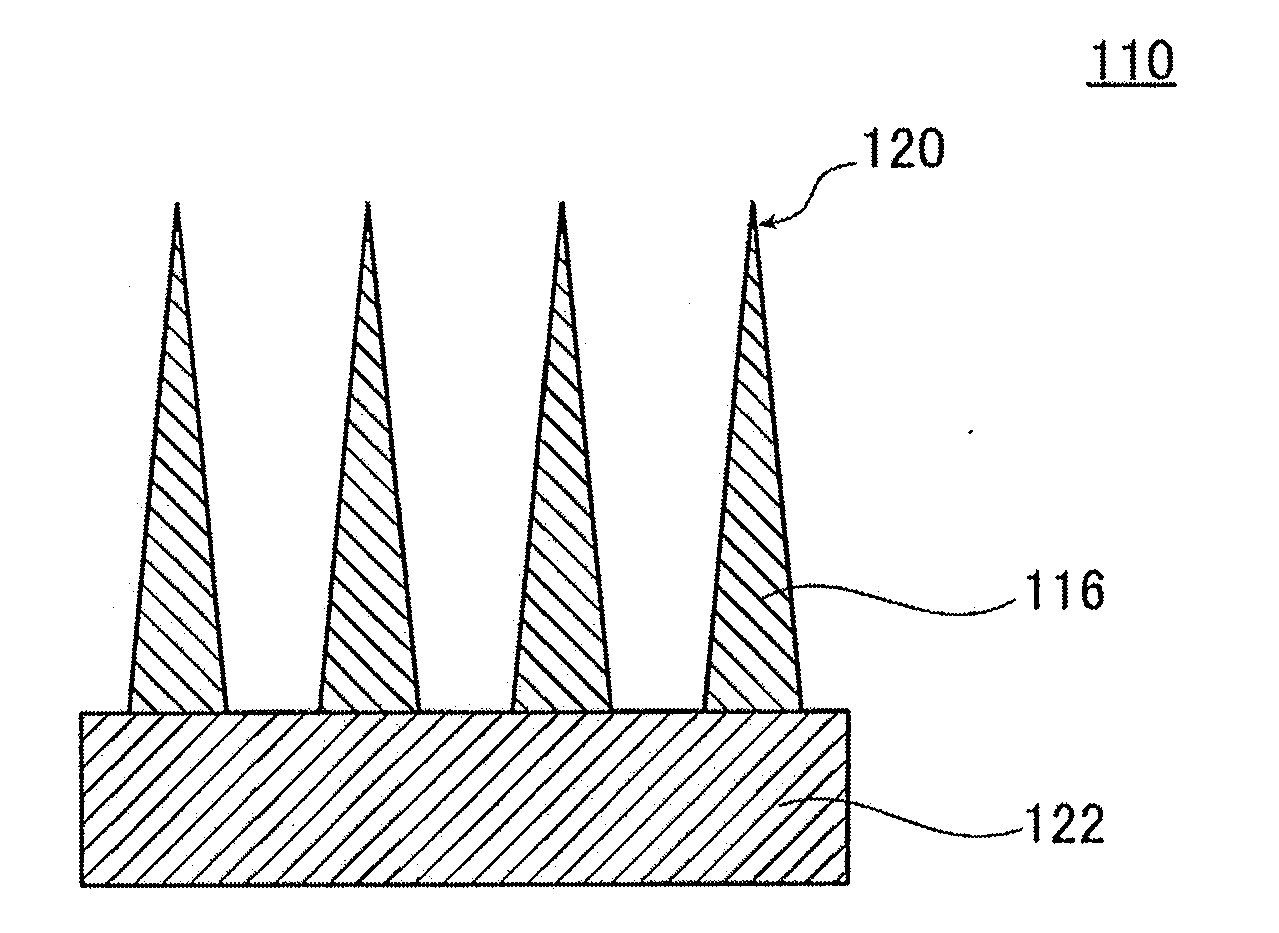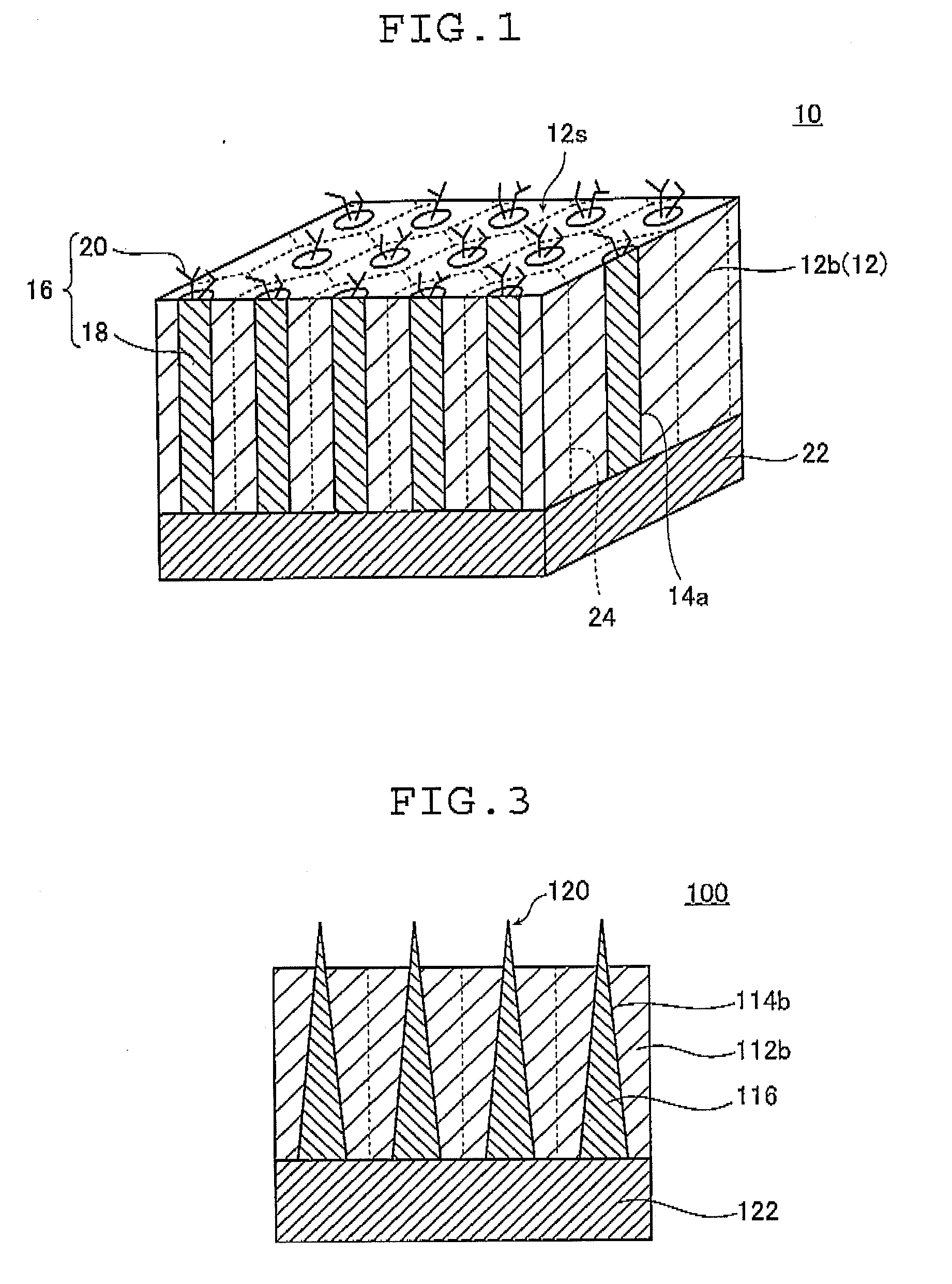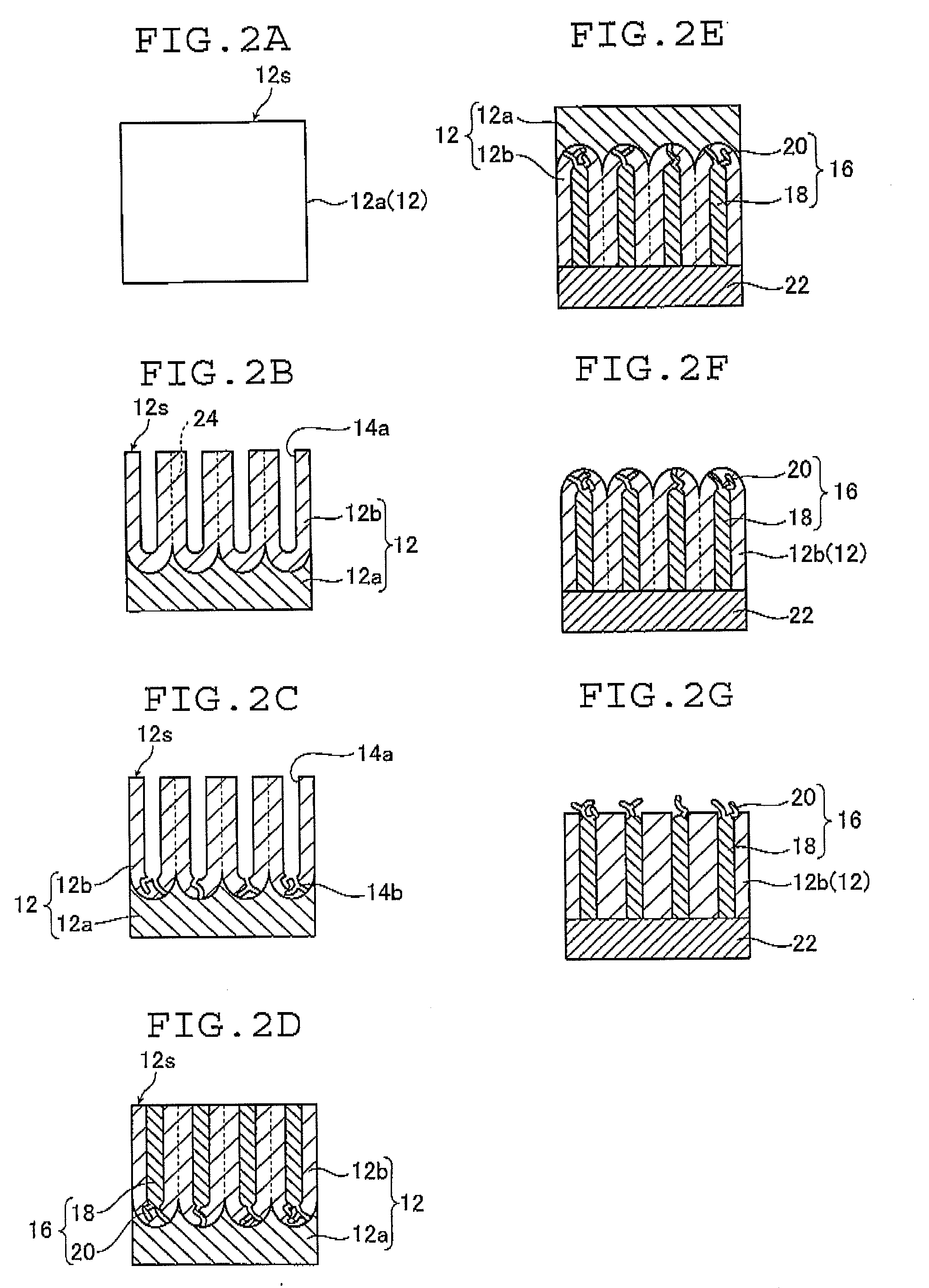Microstructure and method of manufacturing the same
a microstructure and microstructure technology, applied in the field of microstructure manufacturing, can solve the problems of insufficient raman signals, limited measurement size of substances, and difficult manufacturing of metallic nanostructural elements with pointed tips on a nanometer-order scale, and achieve the effect of enhancing electric field and enhancing electric field
- Summary
- Abstract
- Description
- Claims
- Application Information
AI Technical Summary
Benefits of technology
Problems solved by technology
Method used
Image
Examples
examples
[0122]The microstructure 10 shown in FIG. 1 was manufactured by the microstructure manufacturing method shown in FIG. 2.
[0123]In this example, aluminum (Al) was used as the anodizable metal substrate. Anodizing treatment was carried out on this anodizable aluminum substrate. In the present example, the anodizing treatment conditions were as follows: oxalic acid as the electrolytic solution, an electrolytic solution concentration of 0.5 M, a solution temperature of 15° C., and an applied voltage of 40 V.
[0124]Next, current recovery treatment was carried out under the following conditions: steps in which the voltage was lowered by 5 volts per step were carried out from 35 V down to 15 V. In this current recovery treatment, the results of current value measurements, which indicate the state of current value recovery, are shown in the graph in FIG. 6.
[0125]Next, electroplating treatment was carried out, thereby filling gold (Au) into the micropores and forming metal microbodies. Electro...
PUM
| Property | Measurement | Unit |
|---|---|---|
| size | aaaaa | aaaaa |
| diameter | aaaaa | aaaaa |
| diameter | aaaaa | aaaaa |
Abstract
Description
Claims
Application Information
 Login to View More
Login to View More - R&D
- Intellectual Property
- Life Sciences
- Materials
- Tech Scout
- Unparalleled Data Quality
- Higher Quality Content
- 60% Fewer Hallucinations
Browse by: Latest US Patents, China's latest patents, Technical Efficacy Thesaurus, Application Domain, Technology Topic, Popular Technical Reports.
© 2025 PatSnap. All rights reserved.Legal|Privacy policy|Modern Slavery Act Transparency Statement|Sitemap|About US| Contact US: help@patsnap.com



